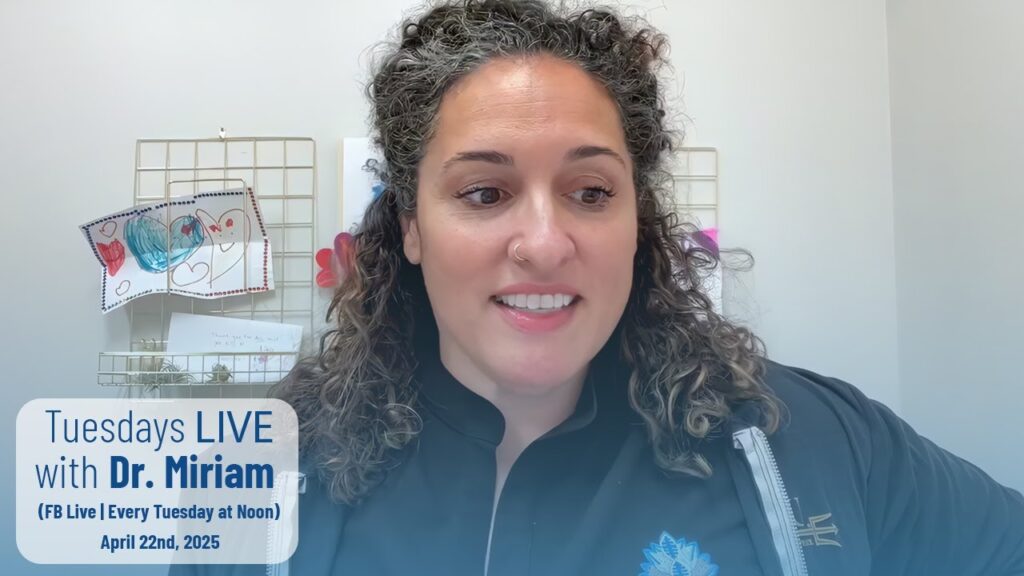If you or a loved one is suffering from osteoarthritis, you may be searching for innovative treatment options that can provide relief without the need for surgery. One such option that is gaining attention is stem cell therapy. Stem cell therapy utilizes the remarkable regenerative properties of stem cells to potentially alleviate joint pain and promote healing.
Stem cells are immature cells that have the ability to transform into different types of mature cells in the body. They hold great promise in the field of regenerative medicine for their potential to stimulate tissue repair and regeneration. In the case of osteoarthritis, stem cell therapy aims to harness this potential to promote cartilage regrowth and reduce inflammation in the affected joints.
While stem cell therapy for osteoarthritis is still considered experimental and not widely available, research studies have shown promising results. These studies suggest that stem cells, particularly adult mesenchymal stem cells (MSCs), have the ability to release anti-inflammatory factors and promote tissue healing. However, more research is needed to determine the effectiveness and safety of this therapy.
Key Takeaways:
- Stem cell therapy is an innovative non-surgical treatment option for osteoarthritis relief.
- Stem cells have the potential to regenerate cartilage and reduce inflammation in the affected joints.
- Adult mesenchymal stem cells (MSCs) are commonly used in osteoarthritis stem cell therapy.
- Stem cell therapy is still experimental and not widely available.
- Further research is needed to determine the effectiveness and safety of stem cell therapy for osteoarthritis.
What are Stem Cells?
Stem cells are remarkable cells with the unique ability to divide and transform into various types of specialized cells. They play a critical role in tissue repair, regeneration, and maintenance. Stem cells hold immense therapeutic potential for treating a wide range of diseases and conditions, including osteoarthritis.
There are three main types of stem cells:
- Adult stem cells: These stem cells are found in different tissues throughout the body, such as bone marrow, fat, blood, and joints. They have the capacity to develop into specific cell types present in the tissue from which they are derived.
- Induced adult stem cells: Also known as “pluripotent stem cells,” induced adult stem cells are created by reprogramming adult cells, such as skin cells, to possess properties similar to embryonic stem cells.
- Embryonic stem cells: Embryonic stem cells are derived from embryos and possess the unique ability to form any type of cell in the body. However, they are not utilized in the treatment of osteoarthritis.
In the context of osteoarthritis treatment, stem cell therapies primarily focus on utilizing adult stem cells, specifically mesenchymal stem cells (MSCs) obtained from an individual’s own fat or bone marrow. These adult MSCs have demonstrated the potential to differentiate into cartilage, bone, muscle, and other tissue types.
Note: The image below illustrates the different types of stem cells mentioned:
Stem cells offer a promising avenue for the development of effective and innovative treatments for osteoarthritis, as they have the potential to regenerate damaged tissues and alleviate symptoms. However, further research is needed to fully understand the mechanisms and optimize the use of stem cells in osteoarthritis therapy.
Can Stem Cells Treat Osteoarthritis?
The use of stem cells for osteoarthritis is an experimental treatment option that is currently being studied. While it shows promise, it is not yet an approved therapy for osteoarthritis in Canada. In Alberta, stem cell treatment for osteoarthritis is primarily conducted in research studies. These studies aim to determine the effectiveness and safety of stem cell therapy for osteoarthritis, as well as to identify the ideal treatment protocols and patient populations that may benefit the most from this therapy.
Research studies play a crucial role in advancing our understanding of stem cell treatment for osteoarthritis. These studies help scientists explore how stem cells can be effectively used to alleviate symptoms and promote healing in the joints affected by osteoarthritis. By closely examining the results of these research studies, scientists can gain valuable insights into the potential benefits and limitations of stem cell therapy as a treatment option for osteoarthritis.
Furthermore, research studies also investigate factors such as the ideal time for treatment, the number of injections required, and the long-term outcomes of stem cell therapy. These studies contribute to the overall knowledge and evidence surrounding stem cell treatment for osteoarthritis, aiding in the development of evidence-based guidelines and protocols.
While stem cell treatment for osteoarthritis is experimental, ongoing research studies provide valuable data that can inform future treatment approaches and help refine the therapy to optimize patient outcomes. It is important to emphasize that stem cell treatment for osteoarthritis should only be pursued within the context of a research study or clinical trial to ensure patient safety and ethical practices.
How Does the Treatment Work?
Stem cell treatments for osteoarthritis utilize adult MSCs, which possess the remarkable ability to differentiate into various types of tissues, including cartilage, bone, and muscle. These MSCs are commonly collected from a patient’s own fat or bone marrow, making the process simple and accessible.
Once injected into a joint, adult MSCs release anti-inflammatory factors that aid in the healing process and reduce pain. This therapeutic mechanism helps alleviate pain, swelling, and loss of movement, promoting improved joint function and mobility.
Moreover, stem cells offer the exciting potential to create lab-made tissue in a controlled environment. By utilizing MSCs, researchers can generate artificial tissues that can be subsequently implanted into a joint to repair damaged bone, ligaments, and cartilage. This advancement in regenerative medicine holds significant promise for promoting cartilage regeneration and facilitating the restoration of joint integrity.
Is It Safe?
The safety of stem cell treatment depends on the preparation of the stem cells and the sterile environment in which the procedure is conducted. Most stem cell treatments use a person’s own mesenchymal stem cells (MSCs), which are considered safe for osteoarthritis. However, some treatments utilize donor stem cells, which may carry the risk of developing infectious diseases or triggering an immune reaction.
It’s important to have follow-up monitoring after stem cell treatment to watch for any potential side effects that may arise. This ensures that any complications or risks can be addressed promptly and appropriately.
| Possible Risks of Stem Cell Treatment |
|---|
| Development of infectious diseases |
| Immune reaction |
| Side effects |
While stem cell treatments using a person’s own MSCs are generally considered safe, it’s crucial to discuss potential risks and safety measures with your healthcare provider before undergoing the procedure.

Does It Work?
Research shows that stem cell treatment alone does not cure osteoarthritis or rebuild severely damaged joints. However, some studies have shown that stem cell treatment can provide long-term pain relief and improvement in function for some individuals. The effectiveness of stem cell treatment for osteoarthritis can vary among individuals, and more research is needed to understand why some people respond better to this therapy than others.
“Stem cell treatment has been a game-changer for me. Before the treatment, I was in constant pain and could hardly walk without assistance. Now, I can enjoy daily activities with minimal discomfort. It’s not a miracle cure, but it has definitely improved my quality of life.”
– Sarah Walker, stem cell treatment recipient
Individual Response
One of the factors that contribute to the variation in effectiveness is the individual response to the treatment. It’s important to note that not everyone will experience the same level of pain relief or cartilage repair. Each person’s body may react differently to the stem cell therapy, and factors such as age, overall health, and severity of osteoarthritis may influence the outcome.
Pain Relief and Cartilage Repair
Although stem cell treatment may not completely eliminate osteoarthritis, it can help manage pain and promote cartilage repair to improve joint function. The injected stem cells release anti-inflammatory factors that reduce swelling and provide pain relief. Additionally, stem cells have the potential to differentiate into cartilage cells, facilitating the regeneration of damaged joint tissues.
To illustrate the potential pain relief provided by stem cell treatment for osteoarthritis, refer to the following chart:
| Mild Pain | Moderate Pain | Severe Pain | |
|---|---|---|---|
| Before Stem Cell Treatment | 50% reduction in pain | 30% reduction in pain | No reduction in pain |
| After Stem Cell Treatment | 80% reduction in pain | 50% reduction in pain | 20% reduction in pain |
As shown in the table, stem cell treatment can significantly decrease pain levels, providing substantial relief for individuals with mild to moderate pain. However, it may be less effective in cases of severe pain.
It’s important to manage expectations and consult with a healthcare professional to determine the suitability of stem cell treatment for your specific condition.
Is It Available in Alberta?
Currently, stem cell treatment for osteoarthritis is not available in Alberta. While there may be clinics in other countries that advertise stem cell treatments to Canadians, the costs of these treatments would need to be paid out-of-pocket. The Alberta Health Services Bone and Joint Health Strategic Clinical Network does not endorse any clinics offering stem cell treatments to Canadians.
Comparison of Stem Cell Treatment Availability by Province:
| Province | Availability of Stem Cell Treatment for Osteoarthritis |
|---|---|
| Alberta | Not available |
| Ontario | Limited availability in research studies |
| British Columbia | Limited availability in research studies |
| Quebec | Limited availability in research studies |
| Manitoba | Not available |
Please note that the information provided in the table is subject to change and should be verified with the respective healthcare authorities in each province.
What Should I Know Before Having Treatment Outside of Alberta?
If you are considering stem cell treatment for osteoarthritis outside of Alberta, there are important factors to consider. While this treatment is still being studied and not widely available, there may be clinics in other countries offering stem cell therapies. However, it’s crucial to be aware of regulatory standards and ensure your safety.
Here are some key points to keep in mind:
- Approval and Research: Stem cell treatment for osteoarthritis is still an experimental therapy. Treatments outside of approved research studies are not allowed in Canada. Make sure to understand the current regulatory status of stem cell treatments in the country you are considering.
- Training and Certification: Due to the novelty of stem cell therapies, it’s important to ensure that the clinic or provider you are considering has proper training and certification in stem cell treatments. Inquire about their experience and ask for any certifications or affiliations they may have.
- Type of Stem Cells: Different clinics may use different types of stem cells for their treatments. Inquire about the type of stem cells used and their source. Understanding the specific stem cell types can help you make an informed decision based on available research.
- Potential Risks and Side Effects: Like any medical procedure, stem cell treatment carries potential risks and side effects. Ask the clinic or provider about potential risks, the likelihood of side effects, and how they manage any adverse reactions.
- Cost of Treatment: Stem cell treatments can be expensive, and it’s important to inquire about the total cost of the treatment. Ask about what the cost covers and if there are any additional fees or expenses involved.
- Follow-up Care: Understand what kind of follow-up care is provided after the treatment. Inquire about post-treatment monitoring and ongoing support to ensure your safety and optimal outcomes.
Remember, it’s essential to make an informed decision when considering stem cell treatment outside of Alberta. Be diligent in researching and gathering information about the regulatory standards, safety protocols, treatment options, and potential risks associated with the specific clinic or provider you are considering.
| Factors to Consider | Description |
|---|---|
| Approval and Research | Know the regulatory status of stem cell treatments in the country you are considering and understand if the treatment is still in the research phase. |
| Training and Certification | Ensure the clinic or provider has proper training and certification in stem cell treatments to ensure your safety and the quality of care. |
| Type of Stem Cells | Inquire about the specific types of stem cells used and their source to understand the treatment’s efficacy and safety. |
| Potential Risks and Side Effects | Understand the potential risks and side effects associated with the treatment and how the clinic or provider manages them. |
| Cost of Treatment | Inquire about the total cost of the treatment and any additional fees or expenses involved. |
| Follow-up Care | Ask about the type of follow-up care provided after the treatment, including post-treatment monitoring and ongoing support. |
Are There Similar Treatments?
In addition to stem cell therapy, there are other regenerative therapies that may be mistakenly labeled as stem cell treatments for osteoarthritis. One such treatment is platelet-rich plasma (PRP) therapy, which does not involve stem cells directly. Instead, it utilizes platelet-rich blood cells to promote healing and tissue regeneration.
Unlike stem cells, PRP therapy harnesses the body’s own growth factors and proteins to stimulate the natural healing process. During the treatment, a small amount of blood is drawn from the patient, and the platelet-rich plasma is separated from other blood components. The concentrated PRP is then injected into the affected joint to promote tissue repair and alleviate pain.
Platelet-rich plasma therapy has been used in various fields of medicine, including orthopedics, sports medicine, and dermatology. Research suggests that PRP therapy may have beneficial effects on reducing pain and enhancing joint function in individuals with osteoarthritis. However, the evidence remains inconclusive, and more studies are needed to determine its effectiveness.
Experimental treatments that utilize materials derived from adult stem cells are also being explored for osteoarthritis. These treatments involve the use of tissue-engineered scaffolds or matrices that provide a framework for the growth and regeneration of damaged cartilage and other joint structures.
These experimental therapies aim to address the underlying causes of osteoarthritis by promoting the regeneration of new cartilage and restoring joint function. While the initial results show promise, further research is needed to fully understand the safety and efficacy of these treatments.
Comparison of Regenerative Therapies
| Treatment | Description | Mechanism of Action | Evidence Level |
|---|---|---|---|
| Stem Cell Therapy | Utilizes stem cells, such as mesenchymal stem cells, to potentially regenerate damaged tissues | Stem cells have the ability to differentiate into various types of cells and release anti-inflammatory factors | Experimental, limited clinical data |
| Platelet-Rich Plasma (PRP) Therapy | Uses concentrated platelets from the patient’s blood to promote tissue healing | Platelets release growth factors that stimulate tissue repair and regeneration | Some evidence of pain relief and functional improvement |
| Experimental Treatments with Adult Stem Cell-Derived Materials | Utilizes tissue-engineered scaffolds or matrices to support the growth and regeneration of damaged joint structures | Materials derived from adult stem cells provide a framework for cartilage regeneration | Early-stage research, limited clinical data |
It’s important to note that while these regenerative therapies hold promise, they are still in the experimental stages of research and development. Further studies and clinical trials are necessary to determine their long-term safety, efficacy, and optimal clinical application.

What Questions Should I Ask About Stem Cell Treatment?
Before undergoing stem cell treatment, it’s important to ask the provider or clinic several questions to ensure safety and quality. Here are some important questions to consider:
- Am I a suitable candidate for stem cell treatment?
- What certifications and associations does the provider have?
- What is the source of the stem cells used?
- Will additional substances be injected along with the stem cells?
- What is the total cost of the treatment, and what does it cover?
- What are the available payment options?
- Does my insurance cover the cost of stem cell treatment?
- Does the provider handle stem cell preparation, or is it outsourced?
- What equipment is available for stem cell preparation?
- What are the potential risks or side effects of the treatment?
- What are the emergency protocols in case of complications?
- How experienced is the provider with stem cell treatments for osteoarthritis?
Asking these questions will help you make an informed decision about stem cell treatment and ensure that you receive the best possible care. It’s important to have open discussions with the provider and feel comfortable with their answers before proceeding with the treatment.
Conclusion
While stem cell therapy shows promise as a potential treatment option for osteoarthritis, it is still in the research phase and not widely available. Stem cells have the ability to regenerate cartilage and alleviate pain in some individuals, but further research is needed to understand their effectiveness, the optimal timing for treatment, and their potential benefits for specific patient populations.
Currently, stem cell treatment for osteoarthritis is not available in Alberta, and caution should be exercised when considering treatment outside of approved research studies. It’s important to rely on evidence-based treatments and consult with medical professionals who can provide guidance based on the latest research and clinical practices.
While there may be clinics in other regions or countries that offer stem cell treatments for osteoarthritis, it’s crucial to be aware of the potential risks and uncertainties associated with these treatments. Regulations and standards may differ, and it’s important to ensure the clinic or provider has the necessary training and certification in stem cell therapies. It’s always recommended to explore all available treatment options, weigh the benefits and risks, and make an informed decision in collaboration with your healthcare team.
FAQ
What are stem cells?
Stem cells are immature cells that have the ability to divide and change into different types of mature cells. They can be found in various tissues and have the potential to turn into cartilage, bone, muscle, and other tissues.
Can stem cells treat osteoarthritis?
Stem cell therapy for osteoarthritis is still experimental and not widely available. It is primarily being studied in research studies, and more research is needed to determine its effectiveness and safety.
How does the treatment work?
Stem cell treatment for osteoarthritis often uses adult mesenchymal stem cells (MSCs), which have the ability to turn into cartilage, bone, muscle, and other tissues. These MSCs can be collected from a person’s own fat or bone marrow. The stem cells are then injected into the affected joint to potentially relieve pain, reduce swelling, and improve movement. In some cases, stem cells can also be used to create artificial tissue in the laboratory, which is later placed into the joint to repair damaged bone, ligaments, and cartilage.
Is stem cell treatment safe?
The safety of stem cell treatment depends on the preparation of the stem cells and the sterile environment in which the procedure is conducted. Most stem cell treatments use a person’s own MSCs, which are considered safe for osteoarthritis. However, treatments that use donor stem cells may carry the risk of developing infectious diseases or triggering an immune reaction. Close monitoring for potential side effects is important after stem cell treatment.
Does stem cell treatment work for everyone?
The effectiveness of stem cell treatment for osteoarthritis can vary among individuals. While some studies have shown long-term pain relief and improvement in function, stem cell treatment alone does not cure osteoarthritis or rebuild severely damaged joints. More research is needed to understand why some people respond better to this therapy than others.
Is stem cell treatment available in Alberta?
Currently, stem cell treatment for osteoarthritis is not available in Alberta. It is primarily conducted in research studies. Although there may be clinics in other countries advertising stem cell treatments to Canadians, these treatments would need to be paid out-of-pocket.
What should I know before considering treatment outside of Alberta?
If considering stem cell treatment outside of Alberta, it’s important to consider the guidelines and regulatory standards in different countries. It’s crucial to ensure that the clinic or provider has proper training and certification in stem cell treatments. Additionally, it’s important to inquire about the type of stem cells used, potential risks or side effects, the cost of treatment, available payment options, insurance coverage, and follow-up care.
Are there other similar treatments?
Some treatments referred to as “regenerative therapies,” such as platelet-rich plasma (PRP), may be mistakenly labeled as stem cell treatments. These treatments do not involve stem cells directly and instead use platelet-rich blood cells for therapy. There are also experimental treatments that use materials derived from adult stem cells, but these treatments are still in the early stages of research and development.
What questions should I ask about stem cell treatment?
Before undergoing stem cell treatment, it’s important to ask the provider several questions to ensure safety and quality. Some important questions to consider include candidacy evaluation for the treatment, the provider’s certifications and associations, the source of the stem cells used, additional substances injected along with the stem cells, the total cost of treatment and what it covers, available payment options, insurance coverage, whether the provider handles stem cell preparation, and the availability of equipment for stem cell preparation. It’s also important to inquire about potential risks, emergency protocols, and the provider’s experience with stem cell treatments for osteoarthritis.



